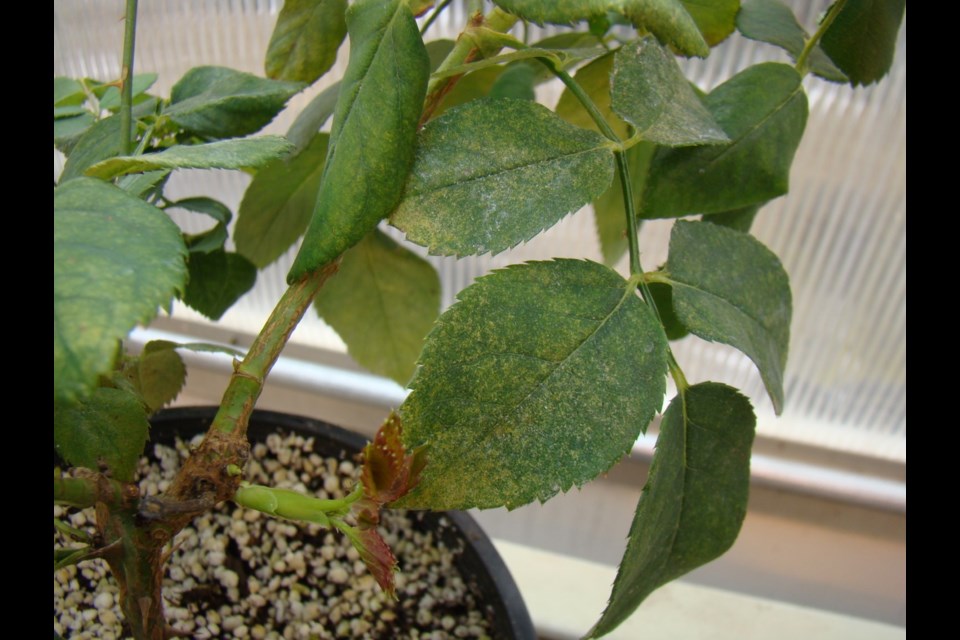If you have houseplants, it is inevitable that at some point, you will also have bugs on your houseplants. There are a few insects that are familiar among Prairie houseplants. Hopefully this article will help you identify those bugs and manage them.
Fungus gnats and shore flies are the most common houseplant insect. Often described as, “those tiny, black, annoying flying insects that tend to fly around your nose, your glass of water and even your food when guests are visiting!” Fungus gnats are weak fliers whereas shoreflies have better aim – like miniature house flies. Fungus gnats and shore flies prefer moist, cool soil to lay and hatch their eggs. To prevent fungus gnats and shore flies, ensure that the soil surface dries out between waterings.
If you already have a fungus gnat or shore fly problem, dry out the soil surface. Drench the houseplant’s soil with Steinernema feltiae nematodes (available at your local garden center). These nematodes will destroy fungus gnat and shore fly larvae in the soil. Place yellow sticky cards in various locations among houseplants. The yellow color of the sticky cards attracts insects. When the insects land on the card, they are trapped by the sticky substance on the surface of the card. Not only do these cards help to trap insects, but they also help monitor the type and number of insects that may be flying amidst the houseplants.
Spider mites are also common among houseplants. This tiny mites (less than one millimetre long) suck juices from a plant. Signs of spider mite infestations include tiny yellow spots on leaves, fragile webbing near the growing points, wilting leaves and eventually, plant death. Tiny spiders are sometimes visible in the webs or on the underside of the leaves. Spider mites prefer hot, dry conditions. Control spider mites by increasing humidity around the plant: misting the plant several times each day for at least seven consecutive days should disrupt the life cycle. Insecticidal soap sprayed on the mites can also be helpful.
Aphids are small (one to 10 millimetres) sap-sucking insects varying in colour from light green to red to brown or black and are usually found on the undersides of leaves. Signs of aphid infestation include plants that have poor vigour and/or have a sticky substance on their leaves (aphid feces or ‘honeydew’). Wash aphid infested plants with a daily blast of water to disrupt the aphid life cycle or treat the plants with insecticidal soap. The insecticidal soap must cover the aphid to be effective. Parasitic wasps like Aphidius colemani can be purchased as beneficial insects however, their success rate can be variable, depending on the environment around the plants and the type of aphid present.
Whiteflies are small (one to two millimetres long and three millimetres wide) white insects, triangular in shape and usually found on leaf undersides. Plants of the Solonaceous family (tomatoes, pepper, eggplant) and poinsettias are especially prone to whitefly invasion. To control a whitefly infestation, lightly vacuum plants or use sticky cards to reduce whitefly numbers.
Thrips are tiny (one millimetre), slender, oblong shaped light brown insects that are poor fliers but fast movers. Signs of thrip damage include distorted growing points and small brown lesions on leaf surfaces. Thrips are difficult to identify in a plant. Place a white sheet of paper beneath the suspected plant and gently shake the leaves of the plant. Thrips will fall on to the surface of the white paper where they are easy to see. Thrips are difficult to control: lightly vacuum plants, use sticky cards to reduce thrip numbers and apply a soil drench of nematodes (Steinernema feltiae) to control their larvae.
Mealybugs and scale can become significant problems in well-established houseplants. Mealybugs are soft bodied, oval shaped insects up to five millimetres long and are white to pinkish-white in colour and covered in a white waxy material. They are usually found in groups on stems or in the axils of leaves and produce honeydew which turns into a white sooty mold growth. Scale insects are five to ten millimetres long and light to dark brown in color. They are found on the stems or undersides of leaves and are covered with a hard, shield like cover over their soft body (like body armor). Both mealybugs and scale can be controlled using Hort oil or dormant oil sprayed directly on the insect. Multiple applications may be necessary.
Prevent insect infestations by keeping your houseplants healthy. Remove any dead or dying leaves. Always place any new plant additions in quarantine, far away from other houseplants, until you are sure they are bug-free.
This column is provided courtesy of the Saskatchewan Perennial Society (SPS; [email protected] ). Check our website (www.saskperennial.ca) or Facebook page (www.facebook.com/saskperennial) for a list of upcoming gardening events




